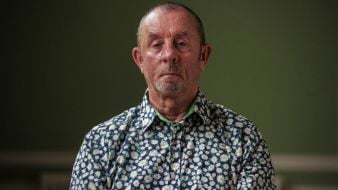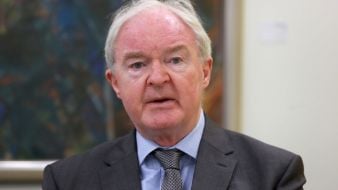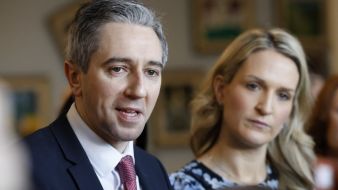A judge has told a jury that the cold case trial of 74-year-old Noel Long may be the oldest murder prosecution in the State's history, and they should bear in mind it is much more difficult for an accused to meet an old case.
Mr Justice Paul McDermott concluded his charge to the jurors on Thursday in the Central Criminal Court trial.
They have so far spent 35 minutes considering their verdict and will return to court on Thursday to resume their deliberations.
Mr Long, with an address at Maulbawn, Passage West, Co Cork has pleaded not guilty to murdering 54-year-old Nora Sheehan between June 6th and June 12th, 1981 at an unknown place within the State.
Her body was found by forestry workers at The Viewing Point, Shippool Woods in Cork six days after she went missing.
In his charge to the seven men and four women of the jury today, Mr Justice McDermott said they could not allow emotion to dictate the judgment they have to make. "Or any revulsion or prejudice that is engendered by the facts of the case, that has to be left outside the door," he said.
The judge said if the prosecution had proved their case beyond a reasonable doubt they must convict the accused and if there was any reasonable possibility consistent with innocence then they must acquit him.
Mr Justice McDermott said the prosecution's contention was that the combined and cumulative effect of the circumstantial evidence led to the "irresistible conclusion" and inference that Mr Long must have murdered Mrs Sheehan.
"You must be satisfied that the inference drawn from the combined evidence is warranted and whether it establishes the guilt of the accused beyond a reasonable doubt," he added.
The judge said the elements relied on by the State as circumstantial evidence include the movement of Mrs Sheehan on June 6th and into the early hours of the next morning, that her body was discovered before 3pm on June 12th at Shippool Woods and the connection between what was found on Mrs Sheehan's clothing and that found in the accused's Opel Kadett car.
He continued: "Then there is the manner in which the body was discovered and how it was discovered, it was in fact dumped and abandoned in undergrowth with a view to concealing it and in a state of undress.
DNA profile
"The finding in relation to the sample in the vagina, the injuries to her body, the connection between the sample found and the accused".
The trial has heard that a partial DNA profile generated from semen obtained from the victim's body 42 years ago had matched DNA found on a beanie hat taken from Mr Long in 2021.
The judge told the jury it was an old case and there is no statute of limitations for murder in this country.
He said the case had been referred to as the oldest murder case ever prosecuted in the State, that there had been a delay of 42 years in prosecuting the case and the jury had to consider the effect of that.
He continued: "Everyone is entitled to a trial with reasonable expedition, this case being 42 years old gives rise to the obvious problem that people die and are not available to give evidence.
"The principal thing to bear in mind is it is much more difficult for a person to meet a case that's an old one than one that occurs in the recent past".
Mr Justice McDermott told the jury that in excess of 280 exhibits had been lost in the case which was "something in the normal course that should not happen".
He said slides and lifts had been retained by Forensic Science Ireland but other material, such as the deceased's clothing, had been lost.
The judge said there was particular focus from the defence about the remnant of a vaginal swab as they said it could have been examined by an expert on their behalf and was therefore a matter of concern.
Reliability of evidence
"Is the evidence weakened where the swab wasn't available to the defence for examination, that is a matter for you," he said.
The judge said whether the jury should consider whether the delay affected the reliability of the evidence and the onus was on the prosecution to establish that it had not
When considering the evidence from the DNA experts, the judge said it would be wrong for the jury to rush to the conclusion that such evidence had gained a level of infallibility and wrong to believe that they had to unquestionably adopt it once the evidence was given to them.
Mr Justice McDermott told the jurors the central matter they have to consider is the offence of murder and they must be satisfied beyond reasonable doubt that the accused unlawfully killed Mrs Sheehan and had the intention to kill or cause serious injury.
He said there was no evidence Mr Long and the victim knew each other but that intentions can be formulated in advance or within a short period prior to a killing or at a time of killing.
The judge told the jury if they are satisfied the accused caused the victim's death in the course of assaulting or sexually assaulting her but without the intent to kill or cause serious injury this reduced the case of murder to manslaughter.
The jury can return three verdicts in relation to the murder charge against Mr Long, namely; guilty of murder, not guilty of murder but guilty of manslaughter or not guilty.
The judge asked the 11 jurors to be unanimous in their verdict.
Closing the prosecution case on Tuesday, Mr Brendan Grehan SC said the evidence all pointed to the "inescapable conclusion" that Mrs Sheehan met her death 42 years ago at the hands of Mr Long. He said the prosecution's case was built on two main planks; the forensic evidence obtained by scientists and DNA profiling.
Mr Grehan told the jurors they were being asked to infer that after Mrs Sheehan was last seen alive she came to be in a car, was badly assaulted and sexually assaulted and was ultimately killed in the course of a vicious assault or to cover up her murderer's "misdeeds".
In his closing address, defence counsel Michael Delaney SC said the case was wholly dependent on forensic science and there was nothing else to connect Mr Long to the deceased.
He said the prosecution can't precisely say how Mrs Sheehan met her death and reminded the jury that former State Pathologist Dr Cassidy said Mrs Sheehan's cause of death was unascertained and had put forward possibilities, one of which was asphyxia. "Just a possibility, very far from beyond a reasonable doubt,' he said.
Counsel said the prosecution had failed to prove the intent required for murder and in those circumstances the most a jury could consider is a verdict of manslaughter.







